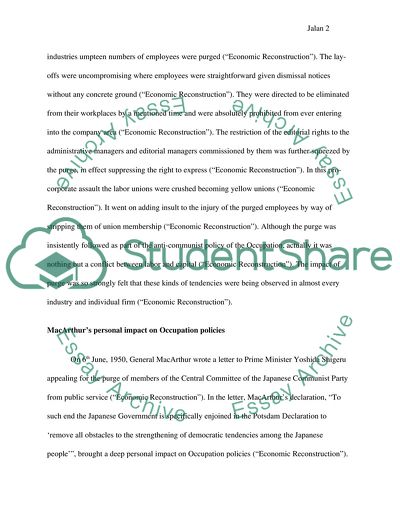Occupation Policies in Japan Essay Example | Topics and Well Written Essays - 750 words. Retrieved from https://studentshare.org/finance-accounting/1544006-occupation-policies-in-japan
Occupation Policies in Japan Essay Example | Topics and Well Written Essays - 750 Words. https://studentshare.org/finance-accounting/1544006-occupation-policies-in-japan.


